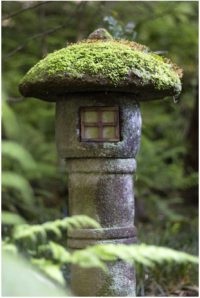Wabi–sabi
The kind of beauty only time acquires, authentic and real are qualities true to the Japanese aesthetic of wabi-sabi.
Wabi-sabi celebrates the inevitable changes that occur through the natural process of growth, decay and renewal, seeing the beauty in every phase. This outlook on life was often expressed in ancient poetry, referenced as ‘wistful, exquisite beauty that vanishes with time’
Wabi-sabi recognizes the changes that occur as life unfolds. It encourages that we accept and savour each moment without the longing for it to last forever. With youth comes age, with joy comes sorrow, life is an ongoing cycle, each phase is significant to the whole story. Accepting this reality transforms the way in which we see the world.
Something wabi-sabi is best appreciated and understood through experience. Words associated with the concept, such as lonesome, detached or broken, are often misconstrued as negative – yet there is a sense of humility, awareness and freedom that come with such states. The wabi-sabi aesthetic embraces flaws and imperfections as unique pieces of an object or a person’s life story.
|
(image – moss growing on a stone lantern. Hokokuji Temple, Kamakura.)
Wabi is about the humility that emerges from a state of solitude, the ability to see through the superficial, to connect with the truth. Free from embellishments life is rich is raw detail.
Sabi evokes appreciation through the sorrow we feel at the sight of fragility.
Together, the concept of wabi-sabi encourages that we see the truth, appreciate and welcome the changes life delivers over time. |
 |
Today, usage of the term wabi-sabi has been applied to modern architecture, interior design and even visual graphics. Commercial products all over the world associate themselves with the concept. However, it is important to remember that something truly wabi-sabi cannot be replicated or mass produced. Flaws and broken pieces are the outcome of a life experienced.
Donna Canning



